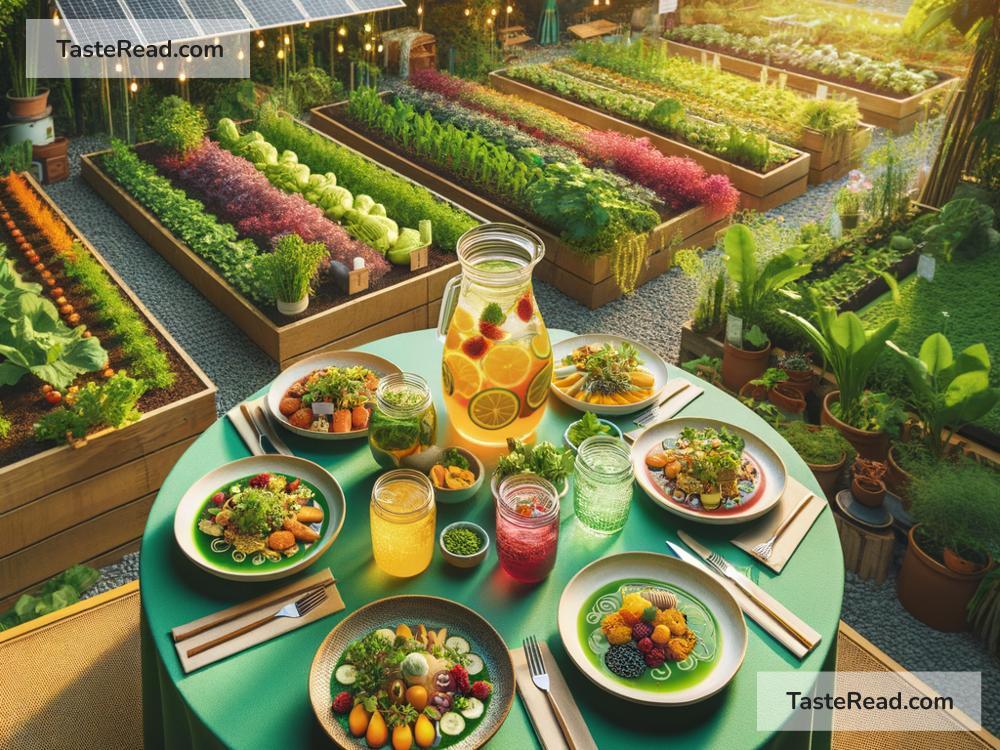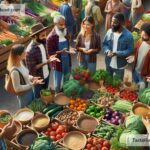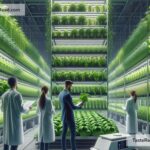The Future of Food and Sustainable Development: Building a Better Tomorrow
Food is vital to life. But have you ever stopped to think about where your food comes from, how it’s grown, and what impact it has on the planet? As our global population grows, so does the need for more food. By 2050, experts predict there will be nearly 10 billion people to feed. This raises a big question: how can we produce enough food without harming the Earth? The future of food is tied closely to sustainable development, and together, they hold the key to creating a healthier and more balanced world.
What Does Sustainable Development Mean?
Sustainable development is all about meeting our needs today without ruining resources for future generations. It’s a way of thinking that focuses on the environment, economy, and society. When applied to food, it means growing and producing food in a way that protects the planet, provides for people, and ensures fair treatment for farmers and workers. If we don’t do this, we risk damaging ecosystems, exhausting land, and worsening issues like hunger and poverty.
Challenges in the Food System
Our current food system faces many problems. Agriculture is one of the biggest contributors to environmental damage. Industrial farming often uses chemicals like pesticides and fertilizers that pollute water and soil. Farming also drives deforestation, which destroys habitats, removes trees that help absorb carbon dioxide, and contributes to climate change.
On top of that, food production uses massive amounts of water. With climate change and population growth, clean water is becoming scarcer in many parts of the world. Waste is another issue. About one-third of all food produced globally is wasted—either thrown away by consumers or lost before it reaches grocery stores.
Lastly, many people can’t afford healthy food, leading to issues like hunger and malnutrition. At the same time, a growing number of people are consuming unhealthy processed foods, which leads to health problems such as obesity and diabetes.
The Vision for the Future of Food
The good news is that change is happening. Scientists, farmers, businesses, and governments worldwide are working on ideas to transform our food system into something more sustainable. Here are some key innovations and trends shaping the future of food:
-
Vertical Farming
One exciting innovation is vertical farming. Instead of using large plots of land, vertical farming grows crops inside tall buildings or warehouses, stacking plants in layers. This method uses less land and water and allows crops to be grown year-round in urban areas. It also reduces transportation costs and emissions because food can be grown closer to where people live. -
Alternative Proteins
Producing meat has a huge environmental impact, consuming land and water while generating large amounts of greenhouse gases. As a solution, companies are creating plant-based meat alternatives and lab-grown meat. These products mimic the taste and texture of real meat but use fewer resources. Plus, they offer new options for people looking to eat less animal-based foods. -
Regenerative Agriculture
Regenerative agriculture is a farming approach that focuses on improving the health of soil, plants, and ecosystems. Unlike traditional farming, it avoids chemicals and works to rebuild soil fertility, store carbon, and promote biodiversity. Healthy soil can absorb more water and reduce erosion, leading to better crops and a cleaner environment. -
Reducing Food Waste
Reducing food waste is critical to sustainability. Governments and organizations are encouraging people to waste less by buying only what they need and using leftovers creatively. At the same time, businesses are using technology to improve food storage and shipping to minimize spoilage. -
Climate-Resilient Crops
As temperatures rise and weather patterns become more unpredictable, farmers need crops that can survive these new challenges. Scientists are developing climate-resilient crops that grow faster, use less water, and resist diseases. These crops can help farmers in vulnerable areas adapt to climate change and keep food supplies stable. -
Technology in Agriculture
Technology is reshaping the future of farming. From drones and sensors to robots and AI, farmers are using advanced tools to monitor soil health, track crops, and manage water and nutrients. Precision agriculture reduces waste and enables farmers to grow food more efficiently.
Sustainable Eating Starts with Us
It’s tempting to think that fixing global food issues is someone else’s job, but we all play a role. Simple changes in how we eat and shop can make a big difference. Buying locally-grown foods supports nearby farmers and reduces transportation emissions. Choosing more plant-based meals helps lower the demand for resource-intensive meat. And by wasting less food, we can conserve resources and prevent greenhouse gases produced by rotting waste in landfills.
Moving Toward a Better Future
The future of food isn’t just about producing more—it’s about producing smarter. If we want to feed billions of people while protecting the planet, we need to rethink how we grow, distribute, and consume food. Innovations like vertical farming, alternative proteins, and regenerative agriculture offer hope for a more sustainable food system. But these changes require support from governments, businesses, and individuals like you.
By working together, we can create a future where everyone has access to healthy, affordable food without sacrificing the health of our planet. The choices we make today can build a greener, fairer, and more sustainable tomorrow. After all, the future of food is really the future of us all.


